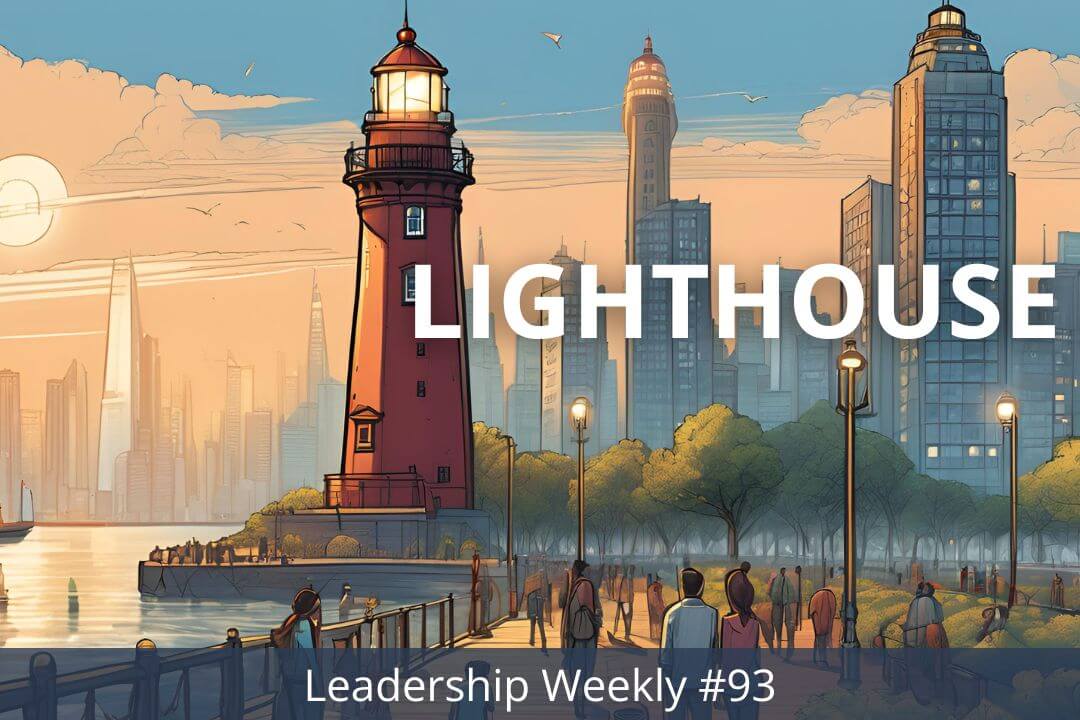Can you believe it's already November? While the days have been growing shorter for awhile, I've realized that this weekend it gets really real: with daylight savings time ending here in America, sunset is about to be around 5:30 pm every night.
This is quite a shock considering over the summer, sunsets in Austin (where I live now) can run well past 8:00 pm. As a night owl, I've always appreciated that and dreaded the shortened evenings of winters.
Fortunately for you, more darkness means more time writing, reading, and creating leadership content for you.
In today’s edition, we cover a favorite 3-word concept I love to use, share our latest Book of the Month which is great for work and home use, and have a special announcement for those of you who care about legal things.
Let’s dive in…
Table of contents:
- 🥘 Food for Thought on Crawl, Walk, Run
- 📚 Book of the Month on a Better Way to Communicate
- 🗣️ A Quick Legal Housekeeping Notice on a new Terms of Service
- 📖 Your Leadership Long Read on 10 things to tell your employees about one on ones
- ❓ Poll of the Week on Goal Setting
➡️ Did a friend forward this to you? Get every issue straight to your inbox by signing up here.
Note: This is a preview of our weekly leadership newsletter, Lighthouse Leadership Weekly (LLW).
To get this sent to your inbox every week, along with our latest long form essays on this blog, you can sign up here.

🥘 Food for Thought
"I'm a big believer in Crawl, Walk, Run." - Marty Cagan in Empowered: Ordinary People, Extraordinary Products
I recently finished reading legendary Silicon Valley product mind, Marty Cagan's second book, Empowered (all 395 pages...), and as I reviewed my notes, this phrase stood out to me.
"Crawl, Walk, Run."
If you've ever bought Lighthouse Lessons for a large group, you know I use this phrase often in the sales process. We often start with a small test group (crawl), then move on to discussing the larger roll out to the organization and what that looks like (walk), and finally roll out to the larger organization en masse (run).
This allows us to make adjustments and adapt to the things that make your company unique, all without wasting too much time or money for either you or me.
"Crawl, Walk, Run" is a great philosophy for closing deals, and it's also a key philosophy for bringing change to your teams.
What it's really all about is realizing that you have to think incrementally about making changes.
Small changes compound. Large changes can shock.
One of the mistakes smart, eager new managers can make is to want to make all kinds of changes at once.
Like a bull in a proverbial china shop, they disrupt everything that was already happening.
And not surprisingly, their team does not respond well.
Your team can become a mix of frustrated, disoriented, and annoyed when you change everything too quickly.
That's why the idea of "Crawl, Walk, Run" is powerful. You ease into the changes by taken small steps that then compound and build up to big change over time.
"Slow is smooth. Smooth is fast."
In line with this approach is the classic special operations saying, with an emphasis on smoothness. This approach is explained well in this post on medium:
"At its core, the saying “Slow is smooth, and smooth is fast” emphasizes the importance of accuracy, consistency, and a controlled pace in executing tasks. Contrary to popular belief, the fastest route to success isn’t always about rushing headlong into tasks. It’s about maintaining a rhythm, a smoothness in operation that naturally leads to increased speed and efficiency."
When you crawl, then walk, then run, you're making sure things are ready as you increase the pace.
But how do you actually do that?!?
Let's dive into a few simple examples that are things I've talked about on the Lighthouse blog and in this newsletter before:
- 1) Your first 90 days as a new manager:
When you're managing a new team, the first thing you should do is get a lay of the land. Don't jump into changes right away. You need to get to know your team, build trust, and figure out what's working and what isn't. That mindset is exactly how you crawl-walk-run your way into successfully leading, motivating, and bringing out the best in your new team.
- 2) Getting buy-in:
Want to make a big change to your team that will solve a long-standing problem? Want to try a different approach to how you and your team do something because you think it will help unlock important, new benefits? Well, if you jump right in and just make the change, chances are your team will resist. However, if you instead take a crawl-walk-run approach and find a first follower (crawl), and seek your team's input (walk) before rolling it out (run), there's a strong chance it will go *a lot* better.
- 3) Task Relevant Maturity:
Ah, the classic concept I love so much. When you're working with your team to improve their skills, the degree to which you're hands on (or off) is dependent on your evaluation of their abilities at that specific task. That journey from Low to Medium to High Task Relevant Maturity perfectly mirrors the crawl-walk-run mindset:
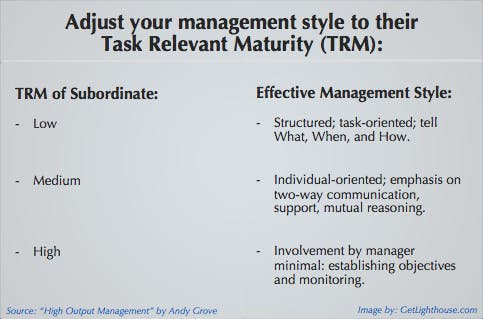
Next time you are thinking about a new project, initiative, or problem to solve at work, take the crawl-walk-run approach. You may be surprised how much it helps you make meaningful progress while having fewer setbacks on your way to success.
-> How do you apply the crawl-walk-run approach? Hit reply and let me know, or share your questions so I can make sure everyone understands key concepts like this.
📚 Book of the Month on a Better Way to Communicate
As the holidays approach, it's a great time to master skills in communicating with people that are different from you.
Whether it's a boisterous uncle from another generation, a challenging young niece or nephew, or simply a difficult person at work, it's important to have the skills to reach them effectively.
That's why this month's Book of the Month is one that is useful both at work and at home.
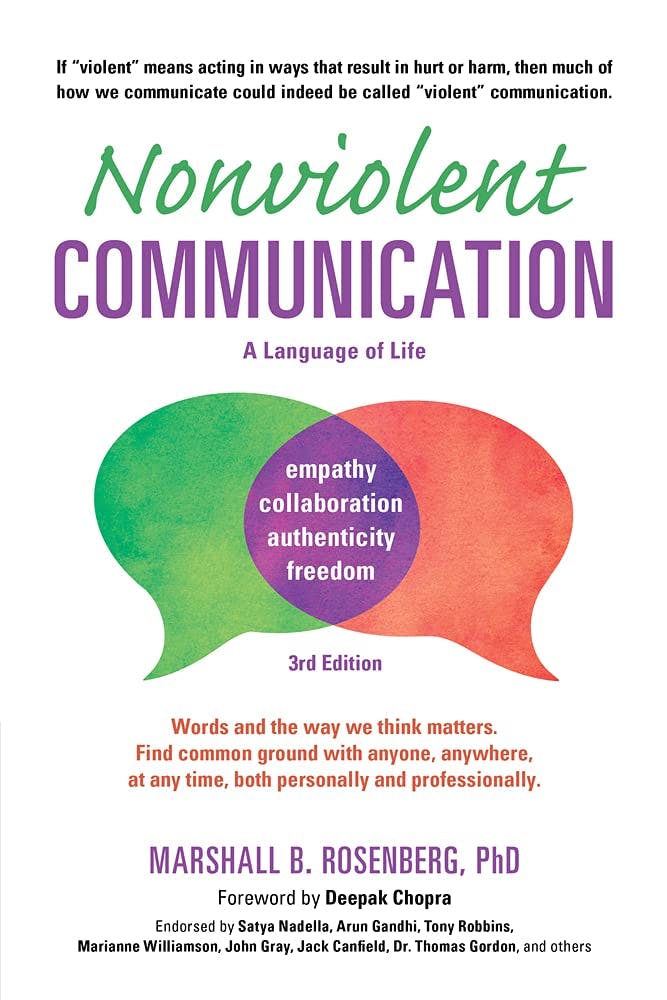
Non-Violent Communication (NVC): The magic decoder ring when normal conversations fail.
I have a funny, and slightly awkward story that explains why I love this book, and how I came to know about it.
About 5-6 years ago Lighthouse hit a very rough patch. So rough we actually laid off the entire team, and I had to get a job, too. (As you can see, we kept moonlighting to resuscitate it, but we had to make a lot of changes when our startup accelerator money ran out.)
In this job, I reported into a CTO who couldn't be more different from me. I was from the East Coast and loved direct, unfiltered conversation. He was from Southern California and loved indirect, soft conversations.
The truth was neither of us could understand the other.
My direct words overwhelmed him and never seemed to truly get through, while his subtle hints were completely missed by me.
To resolve this, he recommended I take some NVC classes and read the book, which was becoming popular in San Francisco at the time.
While the classes weren't particularly helpful, the book was great, which is why I'm recommending it now.
Literally, the only time (and sadly I really mean the proper use of the words "literally" and "only" here) I was able to successfully communicate with him and get things I needed was when I used the NVC framework to tell him what was bothering me and what I needed.
Great at work and at home.
Non Violent Communication has turned out to be fantastic for communication with friends, family, and girlfriends.
In so many cases, the process creates a safe way to communicate even when things are tense or difficult. It also challenges both the speaker and the listener in positive ways to really hear the other person, all while avoiding placing blame or accusing anyone.
Whether you're dealing with a struggling team member, a frustrating peer, a culturally different boss, a difficult family member, or someone else in your life that doesn't seem to get your attempts to communicate as you normally do, NVC is a fantastic new tool to add to your tool belt.
Join me in reading Non Violent Communication by getting your copy now here.
🗣️ A New Terms of Service for Lighthouse
Legally I have to let you know about any changes to our Terms of Service.
Because I want to respect your inbox, I'm doing it here instead of sending a separate, annoying email about it.
If you're someone who needs to know about Terms of Service changes and rules, then take a few minutes for some light legal reading here: https://m.getlighthouse.com/tos
If you're curious what we changed, this was basically bringing it in line with our current business model of our courses plus our newsletter, while removing the language that was focused on our software which we sunset at the end of last year.
Note: If you read them and have questions or concerns, just hit reply or email me and I'm happy to answer questions.
In the end, all of our content and courses are delivered by email, so you can also opt-out any time by hitting unsubscribe.
📖 Your Leadership Long Read on 10 Essentials Every Employee should know about their One-on-Ones
What have you told your team members about one on ones? How do you set the stage properly when you have a new person added to your team?
Unfortunately, most managers are terrible at one on ones...if they even have them.
That means if you take them seriously (as I hope everyone subscribed to this newsletter does), you likely have a lot of educating to do for your new team members.
So whether you have a new hire, a new transfer, or you've recently started managing a new team, it can be really helpful to tell your team what to expect in the meetings and how they can be a part of making them awesome and valuable. And that's what this week's Leadership Long Read is all about.
Read and Share: One on Ones: What Every Team Member Should Know
---
And if you and the other managers at your company want to step up the quality of your 1 on 1s, then sign up for the 1 on 1 Master Class here.
It includes all our best tips, advice, and troubleshooting for having great 1 on 1s in bite-size, highly actionable lessons. Learn more and sign your group up here.
❓ Poll of the week
Last week, we asked you about your biggest challenge right now, and it turned out to be a pretty even split:
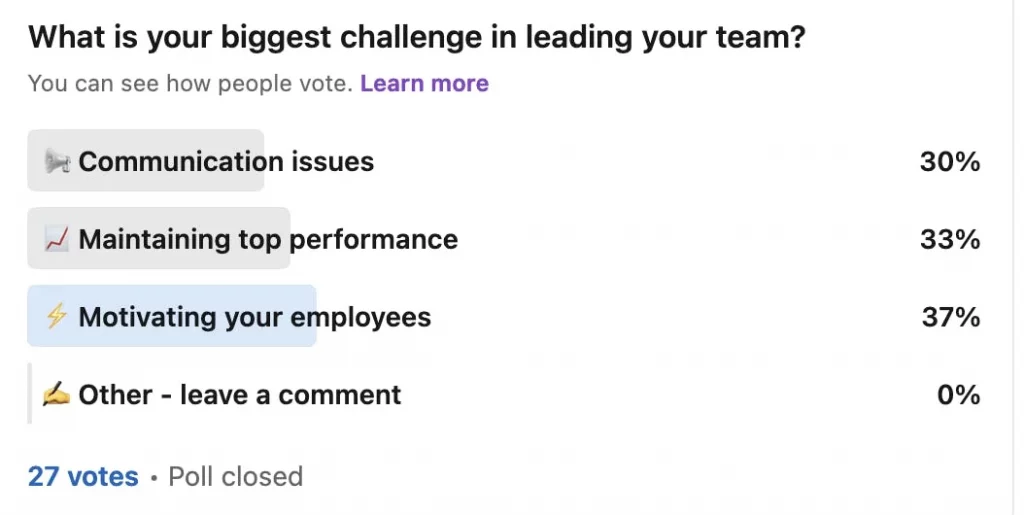
Given the split, there's not much to say except this encourages us to have a steady mix of our content to cover all of them. If one had dominated, we would have focused on that.
---
And this week, we look at a simple, yet important question:
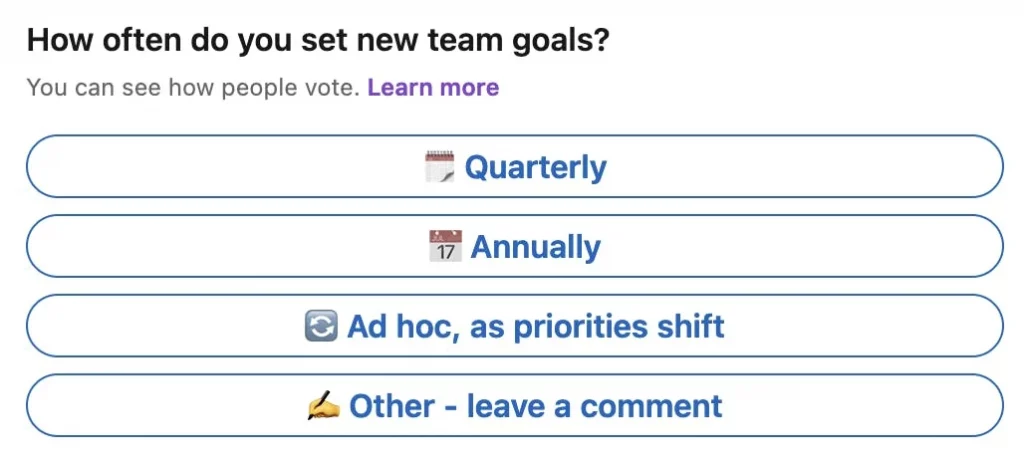
Planning is an important part of any team's process. Yet, we don't all plan at the same speed or frequency, which is why I was curious what pace the Lighthouse community tends to move at. Post your response to let us know when and how you plan here.
Sign up to get this newsletter & our latest blog posts straight to your inbox:
